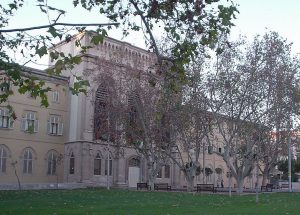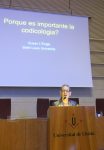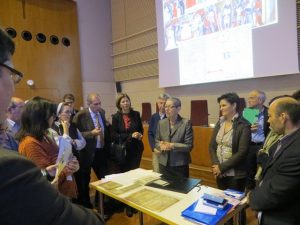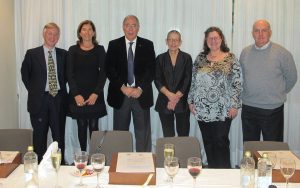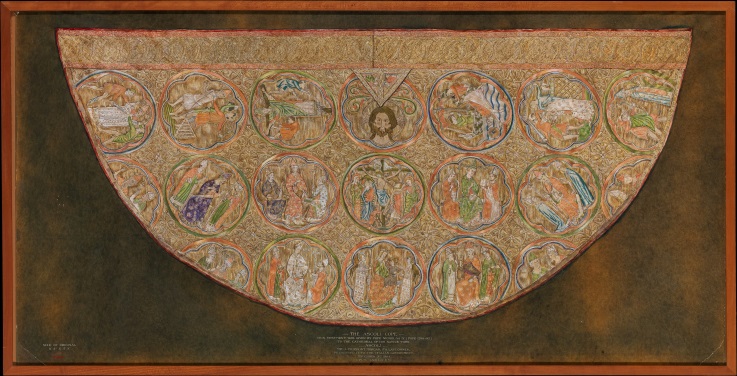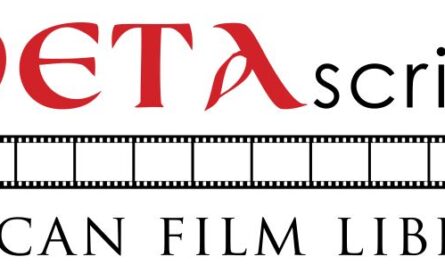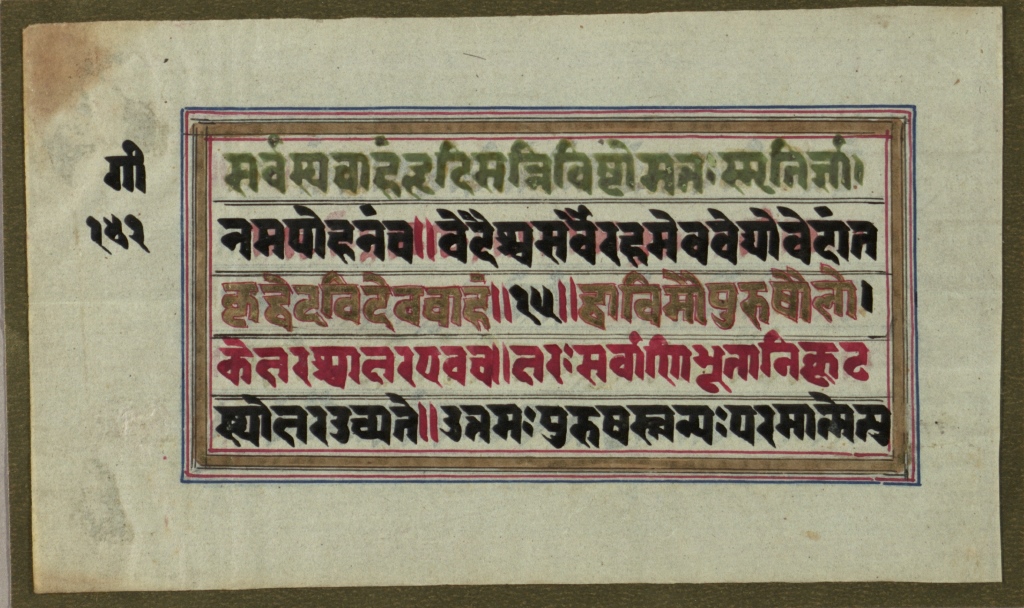Presenting a paper at a foreign conference can be a stimulating experience: one meets new colleagues and catches up with old friends, and the official repasts offer tempting local dishes to savor. An added high is the possibility of presenting in the language of the country—which recently was beseeched of me two weeks before the event. Early in 2015 I was invited to participate as one of three keynote speakers in a colloquium to be held at the University of Lleida (a town in Catalonia, an hour by train from Barcelona) focused on codicology: De la ploma a la biblioteca: Camí vital del llibre manuscrit (From the Pen to the Library: Vital Paths of the Manuscript Book). The conference was scheduled for November 5–6, and I had initially asked if they would like me to read my paper in Spanish, and if so, would they translate my English version for me. “No,” was the answer, “just give us a short abstract in Spanish and everybody will be happy.” Midway in October I was putting the finishing touches on the paper, when I was informed that there would be a lot of students attending this colloquium and for their sake would I, pretty please, agree to actually deliver it in Spanish? Well, fortitude! I managed to produce a credible translation in a week, which I sent to the organizers for a quick grammatical review.
The University of Lleida, founded between 1297 and 1301, was the first university established in Catalonia and in the entire Crown of Aragon. Although banned in 1717 with the rest of the Catalan universities it was re-founded in 1991 and maintains its original medieval structure, to which new buildings have been added. The November colloquium was held in the old building (Figure 1), which, however, has been modernized within, and is outfitted with state-of-the-art smart classrooms and lecture halls. In the main auditorium I opened the event with a paper entitled “Porque Es Importante la Codicologia?” (Why Is Codicology Important?) (Figure 2), and did my best to keep to proper Castilian pronunciation. Following the paper I invited the audience to gather around a table to examine and discuss manuscript leaves from my personal collection that I had brought for this purpose. This unanticipated windup was a great success, generating an animated question-and-answer session that drew on many points I had brought up in my presentation (Figure 3).
My involvement in this codicology panel was linked to a grant I was awarded in 2013, along with six other international scholars, to pursue research on a topic within the theme “Illuminated Manuscripts during the Last Centuries of the Middle Ages for the Monarchy, Church, and Aristocracy in the Kingdoms and States of Southern Europe.” This project was formulated by two Spanish professors and scholars (Gemma Avenosa, Department of Romance Philology, University of Barcelona and Josefina Planas, Department of Art History, University of Lleida), and funded by the Spanish government. Its first result was a conference held in Lleida in November of 2014 that included papers presented by some of the project’s scholars, and this year’s colloquium was the second.
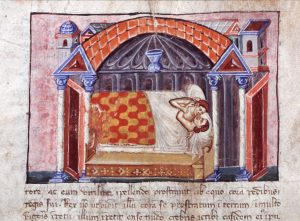
My personal research for this project was conducted in February–March 2014 on a manuscript of Guido delle Colonne’s Historia destructionis Troiae (History of the Destruction of Troy), held at the Biblioteca Nacional de España in Madrid. The manuscript, datable to around 1350, was produced in Venice and was beautifully written and lavishly illuminated with narrative compositions to illustrate the various episodes of the story of the Trojan War (Figure 4). While studying the manuscript I discovered an element, previously unrecorded, which revealed an unexpected feature about its manufacture. Normally, the writing and decoration of medieval manuscripts was executed on animal skin—in this case goatskin, common to Italy—and the quantity of parchment necessary to produce a particular text would be prepared especially for each commission. As I paged through the Madrid manuscript I noticed that, besides the neatly transcribed text and its illustration, most of the parchment leaves had strange shadowy patterns on their surface, comprising oddly-arranged little squares occasionally joined with strings of words (Figure 5).
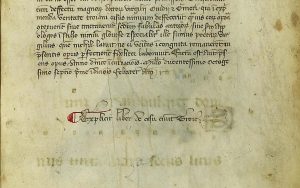
It soon became clear that these ghostly markings were actually traces of musical notes and lines of chant, and that instead of utilizing newly-prepared parchment, parchmenters had taken a previously-executed choir book, scraped down and pumiced its leaves to remove text and music, and then reconfigured them for a second incarnation as a book of narrative prose. Ever since Antiquity this process had often been employed to recycle still-useful parchment from out-of-date or unwanted manuscripts, and the superimposed material is called a palimpsest. What seemed odd was that this manuscript represented an extremely luxurious commission, and its indubitably rich patron would not have needed to economize on parchment. I included details of this discovery in the paper I presented in Lleida, and questioned the audience if anyone had encountered examples of this practice taking place among noble commissions during the Middle Ages. Various people offered thoughts and conjectures on this subject throughout the two days of the conference.
At the concluding luncheon the charming and sociable Rector of the University of Lleida (Roberto Fernández) entered with a flourish, kissed all the women, shook hands with all the men, and during the final toast presented the three keynote speakers with beautiful and weighty facsimiles of an eleventh-century manuscript (dated 1047) of the Commentary of Beato de Liébana on the Apocalypse, MS Vit. 14–2 of the Biblioteca Nacional de España in Madrid (Figure 6). The group picture shows, from left to right: speaker José-Luis Gonzalo; organizer Josefina Planas; the Rector; speaker Susan L’Engle; organizer Gemma Avenosa; and speaker Francisco Gimeno. On the table in the foreground lie the three gift facsimiles, surrounded by copious libations consumed during the meal and flutes holding the sparkling final toast, a Spanish Cava. Since I feared that it might go missing if placed in my suitcase, the facsimile rode home over my shoulder in a tote bag, always kept within eyesight. Another reward garnered from my five days in Spain was a notable improvement in my Spanish!
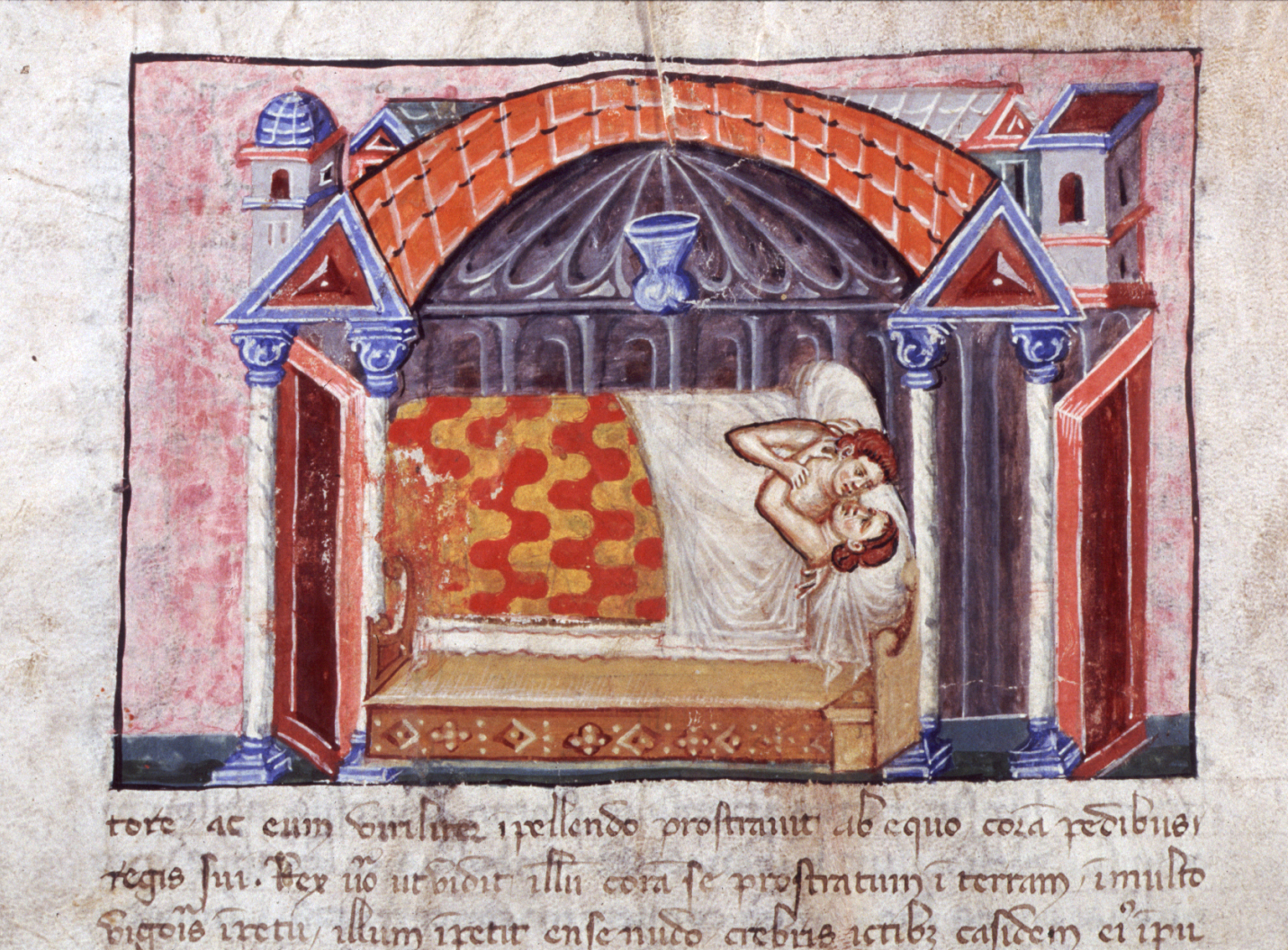
 by
by 